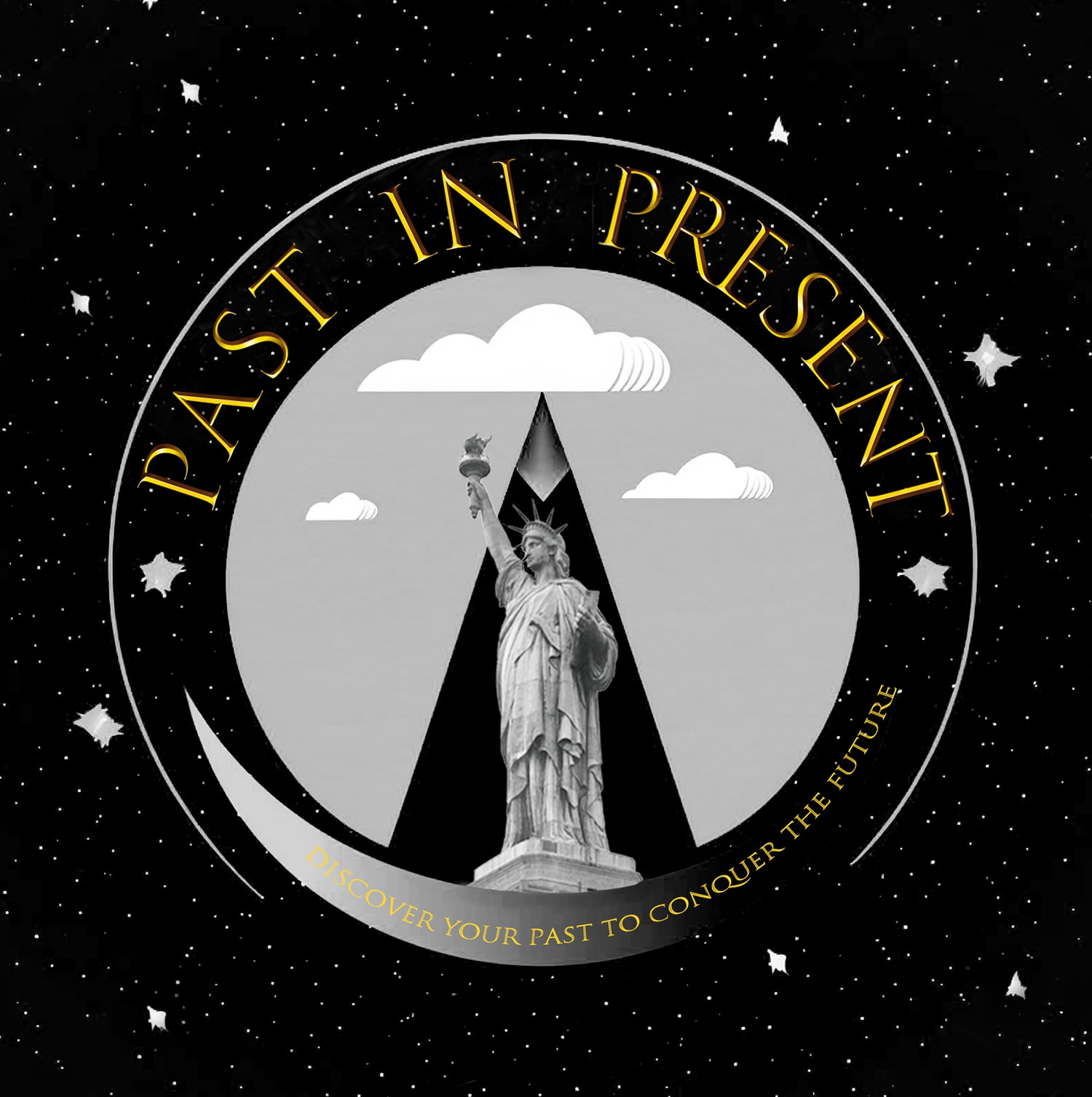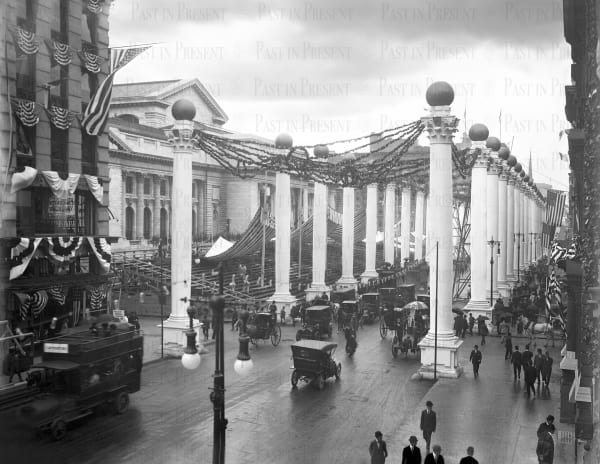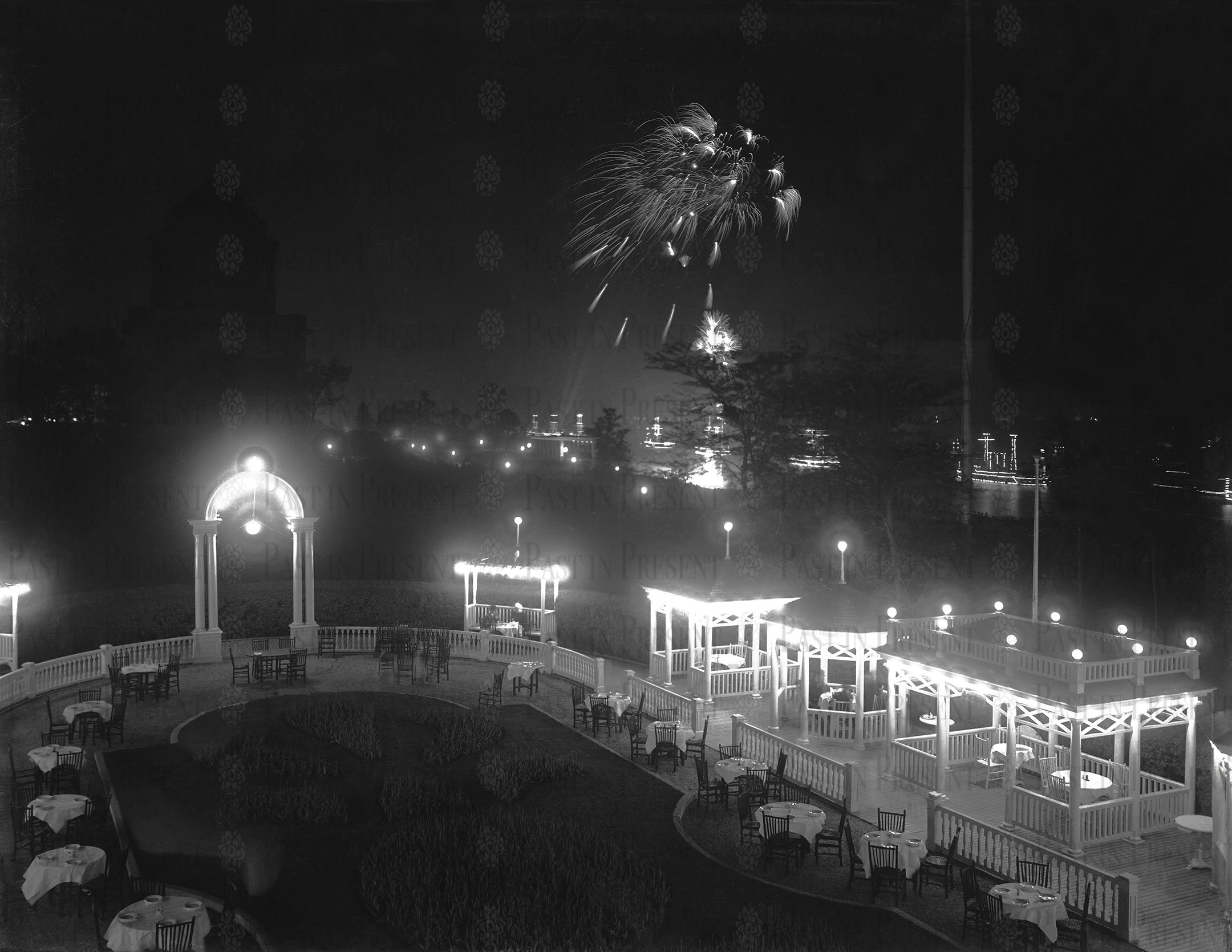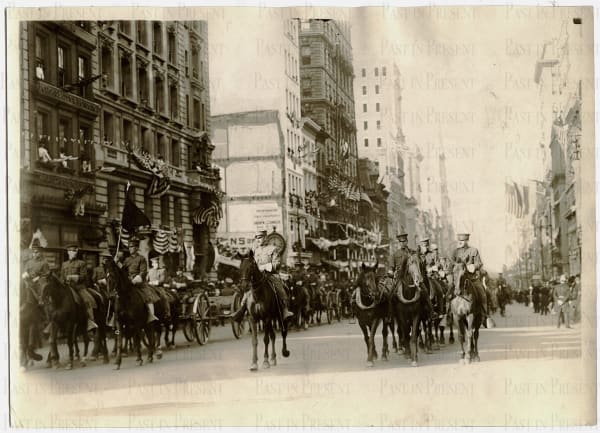We are thrilled to present you with a rare and extraordinary opportunity to acquire large-size, high-quality prints meticulously produced from original vintage glass negatives and historical gelatin silver photographs. These remarkable prints and original photographs capture the grandeur and historical significance of the Hudson-Fulton Celebration, which took place in New York City in 1909.
The Hudson-Fulton Celebration took place only once, from September 25 to October 9, 1909. It was a grand festival marking the 300th anniversary of Henry Hudson's discovery of the Hudson River and the 100th anniversary of Robert Fulton's first successful commercial steamboat voyage. The event featured a spectacular parade of ships on the Hudson River in New York City, showcasing advancements in naval technology and celebrating America's rich history of exploration and innovation, solidifying its importance in the nation's heritage.
The Hudson-Fulton Celebration was one of the most momentous events in early 20th-century America.
The celebration featured a series of spectacular events that drew visitors from across the nation and beyond, including:
A Magnificent Naval Parade on the Hudson River: One of the most spectacular events of the Hudson-Fulton Celebration was the grand naval parade that took place on the Hudson River. The parade featured a dazzling array of ships, including naval vessels from various countries, historical replicas, and commercial steamships. Notably, a replica of Henry Hudson's ship, the *Half Moon*, and a reconstruction of Robert Fulton's *Clermont* steamboat, sailed down the Hudson, symbolizing the advancements in navigation and engineering over the past three centuries.
Military Parade: The military parade was one of the key events that highlighted the grandeur and patriotic spirit of the celebration. It featured various branches of the U.S. military, including the Army, Navy, and Marine Corps, as well as National Guard units and military bands.
Aviation Displays: The Hudson-Fulton Celebration was among the first major public events to feature demonstrations of powered flight. Aviation pioneers such as Wilbur Wright participated, showcasing the technological marvel of the time. The sight of airplanes flying over the Hudson River captivated spectators and marked the beginning of a new era in transportation.
Grand Parades and Festivities: Streets were filled with grand parades, artistic performances, and a celebration of technological advancements, underscoring New York's position as a leader in innovation and progress. These events drew massive crowds, with people from all walks of life coming together to participate in the celebrations. The parades included elaborate floats, historical reenactments, and representations of different ethnic communities, reflecting the diverse makeup of New York's population.
Historical Pageants and Exhibitions: These events highlighted New York State's rich history, from its early Dutch settlers to its pivotal role in the American Revolution and beyond. Lavishly costumed participants reenacted key moments in New York's past, providing a vivid portrayal of the state's legacy.
Cultural and Artistic Exhibitions: The celebration was not just a showcase of technological advancements but also a celebration of culture and art. Numerous exhibitions were held throughout the city, featuring works of art, historical artifacts, and displays that highlighted the cultural heritage of New York and the broader United States. The Metropolitan Museum of Art hosted special exhibits, and the celebration's influence was felt across various cultural institutions.
Nighttime Illuminations and Fireworks: The city of New York was transformed into a dazzling spectacle with fantastic night illuminations that lit up the skyline and the Hudson River, creating a mesmerizing visual experience and drawing widespread public admiration.
On Saturday night, September 25, brilliancy was added to Display
the scene on the river at New York by an elaborate display of
fireworks under the auspices of the Commission. In order
that these might be seen to the best advantage by the throngs
assembled on the sloping banks of Riverside Park, and at the
other points along the water front, it was arranged that the
fireworks should be discharged from four floats anchored at
intervals of 1,000 feet along the opposite New Jersey shore.
Educational Programs: The celebration also had an educational component, with schools and institutions organizing lectures, presentations, and publications that focused on the historical significance of Hudson's and Fulton's achievements. These programs aimed to educate the public about the importance of exploration, innovation, and the development of technology.
The Hudson-Fulton Celebration of 1909 was a grand event that not only honored historical figures but also highlighted the progress of the United States in the realms of technology, culture, and education. It brought together people from different backgrounds to celebrate their shared history and future aspirations, leaving a lasting legacy in the cultural memory of New York City.
-
A Magnificent Naval Parade on the Hudson River
 Hudson-Fulton Celebration spectacular parade of ships on the Hudson River in New York City, 1909High quality digital print produced from digital file created from original vintage glass camera negative and printed on Canson Infinity Platine Fibre Rag photo paper 310g/m2
Hudson-Fulton Celebration spectacular parade of ships on the Hudson River in New York City, 1909High quality digital print produced from digital file created from original vintage glass camera negative and printed on Canson Infinity Platine Fibre Rag photo paper 310g/m2
Print carefully fitted in 18 X 24" Bright White 100% cotton pre-cut Museum Exhibition mat board from Archival Methods fully assembled with a 4-ply beveled window and a 2-ply backing board, hinged together with linen tape
Watermarks do not appear on the actual artwork.13 x 19 in
33 x 48.3 cmEdition of 50$ 350.00One of the most spectacular events of the Hudson-Fulton Celebration was the grand naval parade that took place of the Hudson River. The parade featured a dazzling array of ships, including naval vessels from various countries, historical replicas, and commercial steamships. Notably, a replica of Henry Hudson's ship, the "Half Moon" and a reconstraction of Robert Fulton's "Clermont" steamboat, saled down the Hudson, symbolizing the advensment in navigation and engineering over the past three centuries.The Hudson-Fulton parade showcased a fleet of military ships, including the U.S. Navy's most advanced vessels of the time, as well as international warships, creating a breathtaking display of naval power and technology. -
Hudson-Fulton Celebration "Court of Honor" Columns were erected on Fifth Avenue in front of the New York Public Library, 1909
Discover Your Past to Conquer The Future
Hudson-Fulton Celebration "Court Of Honor" columns were erected on 5th Avenue in front of the New York Public Library
Hudson-Fulton Celebration "Court Of Honor" columns were erected on 5th Avenue in front of the New York Public Library, 1909Hudson-Fulton Celebration in 1909, temporary "Court of Honor" Columns were erected on 5th Avenue in front of the New York Public Library. These columns were part of the elaborate decorations that lined the city streets for the celebration, which spanned several days. The columns, like much of the temporary architecture and decorations created for the event, were designed to evoke grandeur and a sense of historical significance, enhancing the celebratory atmosphere in the city.
The columns were symbolic, representing both the technological advancements achieved since the time of Henry Hudson and Robert Fulton and the cultural heritage of New York. They also served as visual markers for the parade route, where various festivities, including the grand procession and other public events, took place.
The library itself was still under construction at the time, and the placement of these columns in front of it demonstrated how the city was integrating both its past and its future into the festivities. The combination of classical-style columns with modern city streets underscored the blending of history and progress that was central to the celebration's theme.
The Commemorative Columns were designed by architect Ernest Flagg.
Flagg was a prominent American architect known for his Beaux-Arts style, and he was commissioned to design these columns as part of the overall decorative scheme for the celebration.
The columns were part of a larger effort to transform New York City into a visually striking and festive environment for the celebration, which commemorated both Henry Hudson's 1609 exploration and Robert Fulton's 1807 steamboat innovation.
$ 350.00 -
Hudson-Fulton Celebration Fireworks
discover your past to conquer the future Hudson-Fulton Celebration Fireworks Lit Up the Night Sky, Over Hudson River Across From Grand Tomb Adding a Magical Atmosphere to the Festivities and Drawing Widespread Public Admiration NYC, 1909
Hudson-Fulton Celebration Fireworks Lit Up the Night Sky, Over Hudson River Across From Grand Tomb Adding a Magical Atmosphere to the Festivities and Drawing Widespread Public Admiration NYC, 1909 -
Hudson-Fulton Celebration Historical Parade New York City, September 28th 1909
Float No. 24, "Schuyler and Indians at Court of St. James.”
Hudson-Fulton Celebration Historical Parade Float No. 24, "Schuyler and Indians at Court of St. James.
Characters, Society of Colonial Wars Escort, Society of Colonial Wars, mounted.The principal event of Tuesday, September 28, 1909, was the Historical Parade in Manhattan Borough, New York City. The preparations for this parade were made
under the direction of the Historical and Carnival Parades Committee of which Mr. Herman Ridder is Chairman. The historical floats were constructed with the cooperation of the Historical Committee, of which Mr. Samuel V. Hoffman, President of the New York Historical Society, is President.
The latter committee passed upon the historical accuracy of the designs before the construction of the floats began. The idea of a civic parade with floats bearing a series of historical tableaux was suggested at the very first meeting of the Executive Committee of the Hudson Ter-centenary Joint Committee on December 16, 1905, but the exact form of the pageant was undecided for some time.
On September 18, 1908, Mr. A. H. Stoddard of New Orleans, who for many years had been Master of the Mardi Gras pageants in New Orleans, appeared before the Executive
Committee and explained the methods pursued in the parades which have made New Orleans famous as the Carnival City, and on November 20, 1908, his engagement as Captain of Pageantry was authorized. Two months more were consumed in preliminary planning before the work of physical preparation for the Historical Parade and for the Carnival Parade which
was also adopted later actually began. The arduous labors, involving a vast amount of detail, of organizing these two parades and designing and building the floats were therefore performed in less than eight months.
-
Hudson-Fulton Parade
discover your past to conquer the future
Hudson-Fulton Parade Starting Point Forming The Line On The Plaza at 110th Street and Central Park West NYC
Hudson-Fulton Parade Starting Point Forming The Line On The Plaza at 110th Street and Central Park West NYC, 1909The streets of New York City were alive with public parades, concerts, and festivities. These events drew massive crowds, with people from all walks of life coming together to participate in the celebrations. The parades included elaborate floats, historical reenactments, and representations of different ethnic communities, reflecting the diverse makeup of New York's population.
-
“Hudson-Fulton Celebration” NYC Grants Tomb US Navy Ship Fleet Parade

“Hudson-Fulton Celebration” NYC Grants Tomb US Navy Ship Fleet Parade
“Hudson-Fulton Celebration” NYC Grants Tomb US Navy Ship Fleet Parade, 1909High quality digital print produced from digital file created from original vintage glass camera negative and printed on 100% cotton Hahnemühle Matte Fine Art Baryta photo paper.
Print carefully fitted in 18 X 24" Bright White 100% cotton pre-cut Museum Exhibition mat board from Archival Methods fully assembled with a 4-ply beveled window and a 2-ply backing board, hinged together with linen tape
Watermarks do not appear on the actual artwork.
13 x 19 in
33 x 48.3 cm
Edition of 50 -
Hudson-Fulton Celebration Parade
DISCOVER YOUR PAST TO CONQUER THE FUTURE Original vintage gelatin silver photograph. Watermarks do not appear on the actual photograph.
5 x 7 in
12.7 x 17.8 cm -
Hudson-Fulton Celebration, New York City 1909
Original Vintage Photographs -
Hudson-Fulton Celebration Parade Float # 24 Title Car, Colonial Period New York City, 1909.

Hudson-Fulton Celebration Parade Float # 23 Title Car, Colonial Period New York City
Hudson-Fulton Celebration Parade Float # 23 Title Car, Colonial Period New York City, 1909Original vintage gelatin silver photograph. Watermarks do not appear on the actual photograph.
6 3/4 x 8 5/8 in
17 x 21.8 cm -
Hudson-Fulton Celebration Parade Float # 17 "Reception of Stuyvesant" New York City,

Hudson-Fulton Celebration Parade Float # 17 "Reception of Stuyvesant" New York City,
Hudson-Fulton Celebration Parade Float # 17 "Reception of Stuyvesant" New York City,, 1909Original vintage gelatin silver photograph. Watermarks do not appear on the actual photograph.
6 7/8 x 8 3/4 in
17.5 x 22.1 cm





















